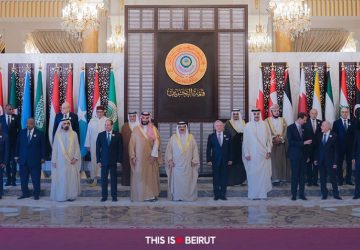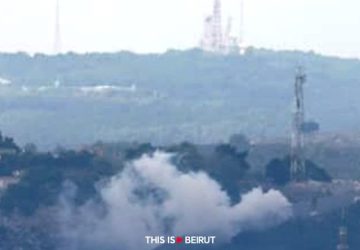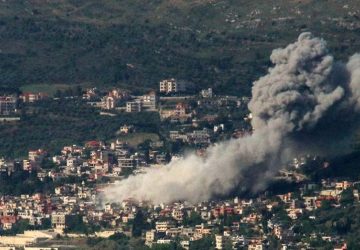Listen to the article
As per the last updates from the Paris 2 meeting held last Friday, negotiations for a ceasefire in the Gaza Strip are expected to resume. Representatives from Egypt, Qatar, the United States and Israel, along with a delegation from Hamas, are scheduled to convene in Doha for discussions. This will be followed by further talks in Cairo aimed at reaching an agreement on ceasefire implementation and prisoner and detainee exchange, based on the outcomes of the recent Paris meeting.
In line with the new framework endorsed during the meeting, fighting is set to halt for a single day for every Israeli detainee released by Hamas. The expected release of 40 detainees translates to a ceasefire extension of six weeks. A step-by-step method will be used to determine the number of hostages swapped for Palestinian security prisoners in Israeli jails, with a ratio of 10 prisoners for each released hostage. Additionally, Israel would agree to allow the return of displaced people from southern Gaza to their homes in the northern part of the Strip and facilitate the rebuilding process.
Accordingly, given the significant progress that could lead to potential agreements, optimism has grown regarding the likelihood of settling before the holy month of Ramadan. March is therefore considered a pivotal turning point. In this scenario, the region would be at a crossroads: either it embraces a ceasefire along the Gaza and southern Lebanon fronts or it escalates into an all-out conflict. The former option has received increasing support due to mounting international and regional pressure, especially following Israel’s inability to enforce its conditions, coupled with Hamas’s overlooked demands. Hence, security officials from the parties involved in the conflict and relevant countries convened in France over the weekend to reinforce the Paris Agreement, following Israel’s decision to step aside. The Paris 2 meeting is expected to wrap up with the announcement of a Ramadan ceasefire. Still, one question remains: what lies ahead?
A regional official involved in the Paris 2 talks has unveiled the existence of a comprehensive security and political plan set to be implemented post-ceasefire. This plan includes the release of Israeli prisoners and Palestinian detainees, alongside political initiatives to advance the two-state solution and implement security measures in Gaza. Concurrently, it involves the establishment of an Egyptian military force under UN auspices to assume security duties.
A French official has conveyed that France is working on multiple fronts to facilitate an agreement regarding a “Ramadan ceasefire” and stop hostilities in southern Lebanon. The objective is to restore calm and stability, begin the implementation of Resolution 1701 and provide essential support to the Lebanese army to undertake its mission.
A French-Qatari summit was hence held in Paris as a prelude to the Rome conference—scheduled for early March—and focused on helping the Lebanese army. The summit centered on ways to support the army to ensure, alongside UNIFIL, security in southern Lebanon—gradually moving towards the north of the Litani River—following the withdrawal of weapons and armed groups from the area, in accordance with the French document and the American initiative. With the ceasefire agreement, Lebanon would be on the brink of a new phase, both politically and security-wise.
Political circles have summarized the content and different phases of the French document, as well as the American initiative presented by US envoy Amos Hochstein during his recent visit to officials. The document outlines key milestones spread across three phases, which can be outlined as follows:
* Ensuring a ceasefire and the end of military operations on both sides of the Lebanese-Israeli border concurrently with a ceasefire in Gaza.
* Handing over the security responsibilities of the disarmed international area to the Lebanese army and UNIFIL in line with Resolution 1701, with a firm commitment to prevent any armed presence, particularly by Hezbollah members from the area. Additionally, enforcing strict penalties on anyone carrying weapons or attacking the army or UNIFIL forces, to be phased in gradually.
* The return of US envoy Amos Hochstein, following successful negotiations with Israel, to secure concessions on the 13 disputed border points and work towards their resolution. Starting from point B1 in Naqoura to Shebaa, Israel is to withdraw from these areas and hand them over to international forces. This move should also dismiss Lebanon’s plea to assert control, as these areas are recognized by Syria as Lebanese territories. This recognition stems from a joint statement issued during the Lebanese-Syrian summit in Damascus in August 2008, attended by Presidents Michel Sleiman and Bashar al-Assad. The statement reads, “[…] Israel’s withdrawal from the Lebanese Shebaa Farms, Kfarchouba hills and the northern part of Ghajar, as stipulated by relevant United Nations resolutions.”
* The Quintet’s commitment to drafting a locally endorsed roadmap, focusing on electing a president and forming a technocratic government. One that would steer away from sectarianism and start the much-needed reforms.
* Offering assistance to Lebanon as part of a comprehensive rescue plan devised by the Quintet alongside donor nations. This plan hinges on the election of a president and guarantees stability, security and safety within Lebanon. Reports indicate that the aid package will focus primarily on the swift reconstruction of the South, with the understanding that negotiations with Hezbollah would be limited to rebuilding issues, sidelining discussions related to the presidency.
As per sources within the Quintet, the success of this plan hinges on the appointment of highly capable individuals, including the president, prime minister, ministers and the working team.
In this context, European political circles are suggesting that Hezbollah is likely to take a more rigid stance on the presidency issue. This shift comes in the wake of the Gaza ceasefire and the cessation of military operations in the South, seen as measures to preempt any potential backstabbing. Hezbollah is worried that the new head of state will work towards limiting the influence of the “resistance,” curb its activities, undermine its existence and adopt the logic of the opposition, which claims that the party’s actions are driven by an Iranian agenda.
Hence, the Shiite duo (Amal-Hezbollah) is holding on to its candidate, Sleiman Frangieh, and seeks to promote him regionally if the Quintet fails to agree on a third candidate.
The scenario being planned for the current phase taking hold of the region is starting to take shape, and its outlines are clearer, though they are subject to certain adjustments. These developments are unfolding despite the US’s reluctance to commit to a permanent ceasefire, a stance closely tied to the upcoming American presidential elections. As the election draws nearer, President Joe Biden’s alignment with Israeli Prime Minister Benjamin Netanyahu is becoming more pronounced, driven by electoral calculations, thereby bolstering Israel’s position.
On the other hand, Palestinian and Arab leading forces are urging Israel to abide by international resolutions and the previously accepted two-state solution, which is no longer deemed viable today. Drawing from ongoing discussions, a regional official foresees a comprehensive, fair and definitive peace initiative for the region. According to informed sources, the implementation of this plan is expected to see the day following the “Ramadan ceasefire.”





